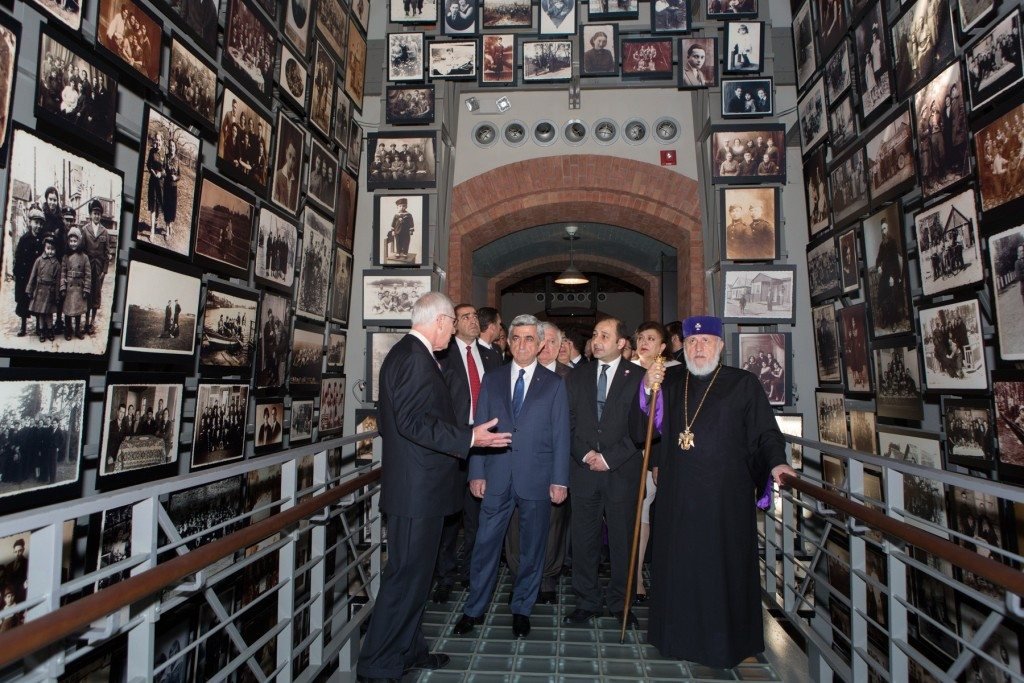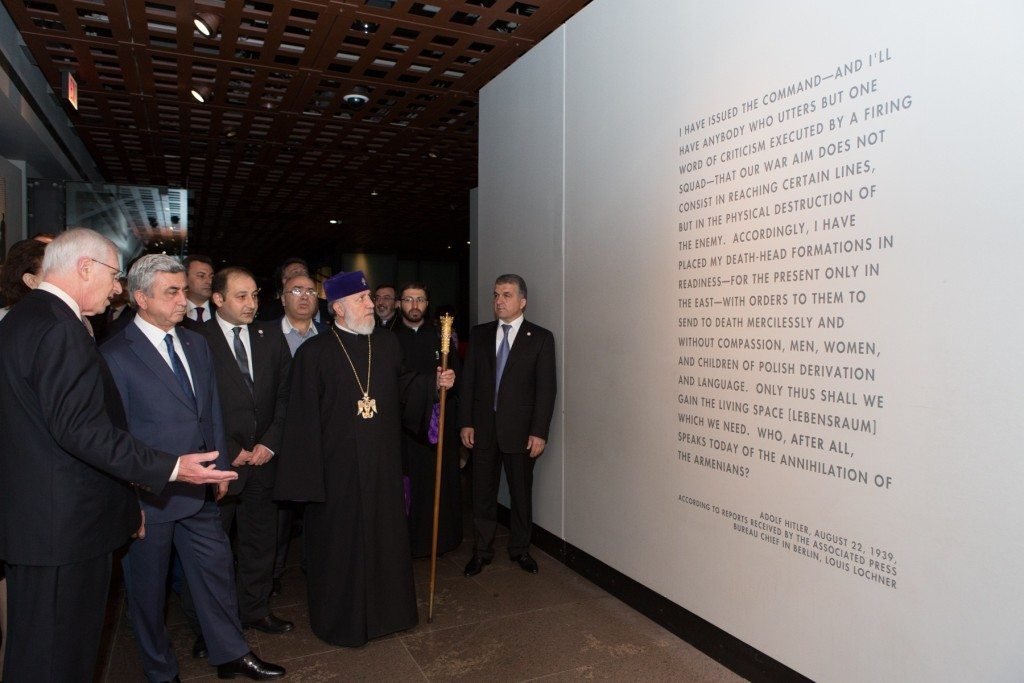WASHINGTON—On May 6, Armenia’s President Serge Sarkisian visited the U.S. Holocaust Memorial Museum as part of his three-day trip to Washington, D.C. The president’s visit took place on the eve of commemoration activities in Washington marking the 100th anniversary of the Armenian Genocide. From May 7-9, the National Commemoration of the Armenian Genocide Centennial is hosting a series of events commemorating the anniversary. Thousands will gather from across the country, and internationally, to join in remembering and honoring those lost in the genocide 100 years ago.

“It was an honor to have the opportunity to visit this memorial and museum. We, Armenians, Jews, sons and daughters of other nations that have survived genocides shall continue working together to fight for recognition, condemnation of all genocides and other crimes against humanity, as that is the most efficient way of preventing them in the future,” said Sarkisian.

U.S. Holocaust Memorial Museum statement on Armenian Genocide
Last month the U.S. Holocaust Museum issued a statement on the Centennial of the Armenian Genocide. Below is the full text of the statement:
WASHINGTON—On the 100th anniversary of the Armenian Genocide, the United States Holocaust Memorial Museum remembers the suffering of the Armenian people. The Ottoman government, controlled by the Committee of Union and Progress (İttihat ve Terakki Cemiyeti), systematically eliminated the Armenian ethnic presence in the Anatolia region of its empire. Between the spring of 1915 and the end of autumn 1916, Ottoman authorities arrested, deported, conducted mass killings, and created conditions intended to cause widespread death among Armenian Christians.
At least 664,000 and possibly as many as 1.2 million Armenian men, women, and children died in massacres, in individual killings, or as a consequence of systematic ill-treatment, exposure, starvation, and disease. Knowledge of these atrocities quickly spread around the world and aroused widespread activism and even protests from representatives of the Ottomans’ World War I allies, Germany and Austria-Hungary.
The origins of the term “genocide” rest, in part, in the events of 1915-16 in Anatolia, then part of the Ottoman Turkish Empire. Polish-Jewish lawyer Raphael Lemkin highlighted early exposure to the history of Ottoman attacks against Armenians, anti-semitic pogroms, and other cases of targeted violence as key to his beliefs about the need for the protection of groups under international law. Inspired by the murder of his own family during the Holocaust, Lemkin tirelessly championed this legal concept until it was codified in the United Nations Convention on the Prevention and Punishment of the Crime of Genocide in 1948.
An accurate understanding of history rests on objective research conducted by scholars of all nationalities and disciplines. The Museum calls on all governments and private institutions to make freely available complete archives relevant to these events.




we commend the president of armenia for his honourable gesture,
visiting the united states holocaust memorial museum is indeed a sign of respect on the part of armenia and all armenians baround the world.
israel,in return must do the same and recognize the armenian genocide.
is there a reason of why we have not heard from them after 100 years.
THEY DID !!!!!!!!!!!!!!!!!!!!!!!!!!!!!!!!!!
I’ve heard that there was a proposal to build an Armenian Genocide museum a few blocks away from the White House in Washington, DC. What has happened to that project?
The question that we should pose today…WHO AFTER ALL DOES NOT WANT TO REMEMBER THE ANNIHILATION OF ARMENIANS TODAY?
Answer: ISRAEL, USA, UK, AUSTRALIA to top the list of main countries.
Yes, these are the most democratic, civilised and human rights’ advocates. The mind boggles…
I remember that a few years ago there was a project for a monument in Washington D.C. dedicated to the Armenian Genocide. If I am not mistaken the building was donated but the entire project was abandoned.
Could someone give details about this project and eventually the causes of its failure ?
Believing that the abandonment of such a project is a huge, regrettable, and very costly error, more details related to this failure should be revealed by the persons involved in this crucial project